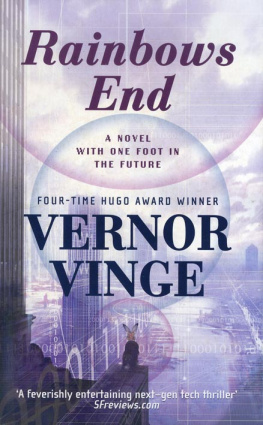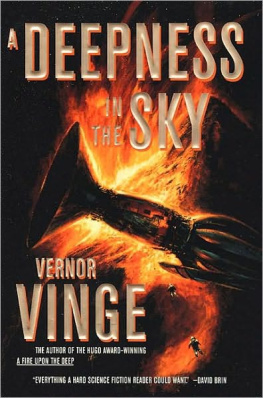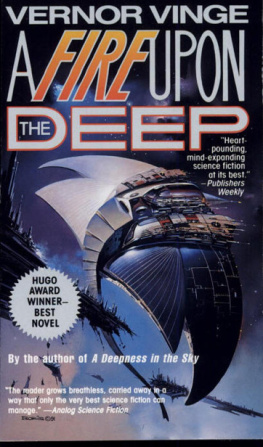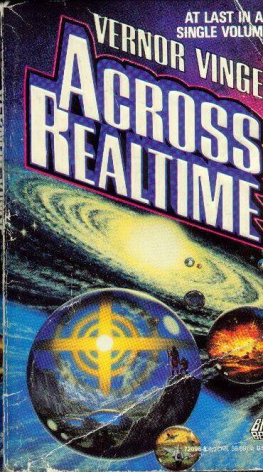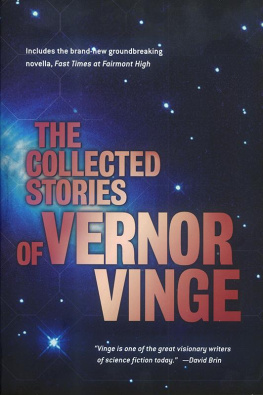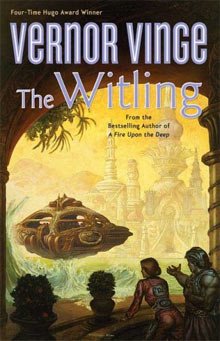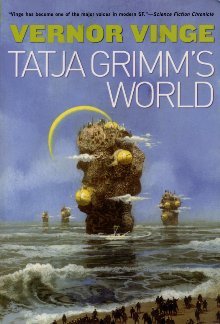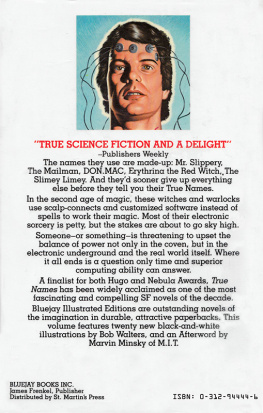RAINBOWS END
To the Internet-based cognitive tools that are changing our lives Wikipedia, Google, eBay, and the others of their kind, now and in the future
ACKNOWLEDGMENTS
I am grateful for the advice and help of:
Jeff Allen, David Baxter, Ethan Bier, John Carroll, Randy Carver, Steven Cherry, Connie Fleenor, Robert Fleming, Peter Flynn, Mike Gannis, Harry Goldstein, Thomas Goodey, Barbara Gordon, Judith Greengard, Dipak Gupta, Patricia Hartman, Patrick Hillmeyer, Cherie Kushner, Sifang Lu, Sara Baase Mayers, Keith Mayers, Terry McGarry, Sean Peisert, William Rupp, Peter H. Salus, Mary Q. Smith, Charles Vestal, Joan D. Vinge, Gabriele Wienhausen, and William F. Wu.
I am very grateful to James Frenkel for the wonderful job of editing he has done with this book. Jim and Tor Books have been very patient with me in the long process of creating Rainbows End.
Prologue
Dumb Luck and Smart Thinking
The first bit of dumb luck came disguised as a public embarrassment for the European Center for Defense Against Disease. On July 23, schoolchildren in Algiers claimed that a respiratory epidemic was spreading across the Mediterranean. The claim was based on clever analysis of antibody data from the mass-transit systems of Algiers and Naples.
CDD had no immediate comment, but in less than three hours, public-health hobbyists reported similar results in other cities, complete with contagion maps. The epidemic was at least one week old, probably originating in Central Africa, beyond the scope of hobbyist surveillance.
By the time CDD got its public-relations act together, the disease had been detected in India and North America. Worse yet, a journalist in Seattle had isolated and identified the infectious agent, which turned out to be a Pseudomimivirus. That was about as embarrassing a twist as the public-relations people could imagine: Back in the late teens, CDD had justified its enormous budget with a brilliant defense against the New Sunrise cult. The Sunrise Plague had been the second-worst Euro-terror of the decade. Only CDDs leadership had kept the disaster from spreading worldwide.
The Sunrise Plague had been based on a Pseudomimivirus.
There were still good people at CDD. They were the same specialists who had saved the world in 2017. They quickly resolved the July 23 issue. Public Relations could now spin a more or less accurate statement: Yes, this Pseudomimi had evaded the standard announcement protocols. The failure was a simple software error at the Centers Current Events website. And yes, this Pseudomimi might be a derivative of the Sunrise Plague. Denatured strains of the original, death-optimized, virus continued to echo around the world, a permanent addition to the background noise of the biosphere. Three had already been sighted that year, one just five days before, on July 18. Furthermore (and here the public-relations people regained their usual elan), all such events were subclinical, having essentially no perceptible symptoms. The Pseudomimiviruses had an enormous genome (well, enormous for a virus, small for almost anything else). The New Sunrise cult had transformed that genome into a Swiss Army knife of death, with a tool to counter almost every defense. But without such optimization, the Pseudomimis were clunky bags of DNA junk. And so, in conclusion, we at CDD apologize for failing to announce this routine event.
A week passed. Two weeks. There were no further captures of the organism. Antibody surveys showed that the epidemic never got much farther than the rim of the Mediterranean. CDDs claims for the outbreak were absolutely correct. This kind of subclinical respiratory epidemic was almost a contradiction in terms. If not one victim in a thousand even gets the sniffles, the virus is almost dependent on charity to make its way in the world.
The CDD explanations were accepted. The public-health hobbyists had been scaremongering a commonplace event.
In fact, there was only one misrepresentation in the CDD story, and that successfully eluded public notice: The failure to announce the virus had not been a mess-up at the public website. Instead, it had been a glitch in the Centers just-revised internal alert system. So the responsible specialists had been as ignorant of the event as the general public; it was the hobbyists who had alerted both.
In the inner circles of EU intelligence, there were people who were not forgiving of such lapses. These were people who countered terror on a daily basis. These were people whose greatest successes were things you never heard about and whose failures could be bigger than the Sunrise Plague.
Understandably, these people were both paranoid and obsessive. The EU Intelligence Board assigned one of its brightest agents, a young German named Gnberk Braun, to oversee a quiet reorganization at CDD. In those parts of intelligence where Braun was known, he was somewhat famous as the most obsessing of the obsessive. In any case, he and his teams quickly revamped the internal reporting structure of the CDD, then undertook a Center-wide review that was to last six months and consist of random fire drills that would probe threats and conjectures more bizarre than the epidemiologists had ever imagined.
For CDD, those six months promised to be a torment for the incompetent and a revelation for the brilliant. But Brauns fire-drill regime lasted less than two months, and was ended by an advertisement at a soccer match.
The first meeting of the Greece-Pakistan Football Series was held in Lahore on September 20. The Greece-Pakistan Series had some tradition behind it or perhaps the supporters were just old-fashioned. In any case, the advertising was very much a blundering, twentieth-century affair. There were commercials where each advert was seen by everyone. Display space was sold on the inner barricades of the stadium, but even that was not targeted per viewer.
A remarkable thing happened at the match (two remarkable things, if you count the fact that Greece won). At halftime a thirty-second advert for honeyed nougats was shown. Within the hour, several freelance marketing analysts reported a spike-surge of nougat sales, beginning three minutes after the advert. That single advertisement had repaid its sponsor one hundred times over. Such was the stuff of dreams at least for those unwhole-somely fixated on the marketing arts. Throughout the afternoon, these millions debated the remarkable event. The advertisement was analyzed in every detail. It was an uninspired thing, quite in keeping with the third-rate company that produced it. Importantly, it contained no subliminal messing about (though finding such was the main hope of those who studied it). The delay and abruptness of the surge were quite unlike a normal advertisement response. Within hours, all reasonable participants agreed that the Honeyed Nougat Miracle was just the kind of mirage that came from modern data-dredging capabilities: if you watch trillions of things, you will often see one-in-a-million coincidences. At the end of the day, the whole affair had canceled itself out, just another tiny ripple in the myriad conversations of public life.
Certain observers did not lose interest. Gnberk Braun, like most in the inner circles of the EUIB, had an enormous (lets be frank: an apprehensive) respect for the power of open intelligence analysis. One of his teams noticed the Honeyed Nougat Miracle. They considered the discussion. True, the event was almost surely a mirage. And yet, there were additional questions that could be asked; some were questions that governments had a special knack for answering.
And that brings us to the second bit of dumb luck. On a whim, Braun called for a fire drill: the analytical resources of the CDD would be pointed at the
Next page
